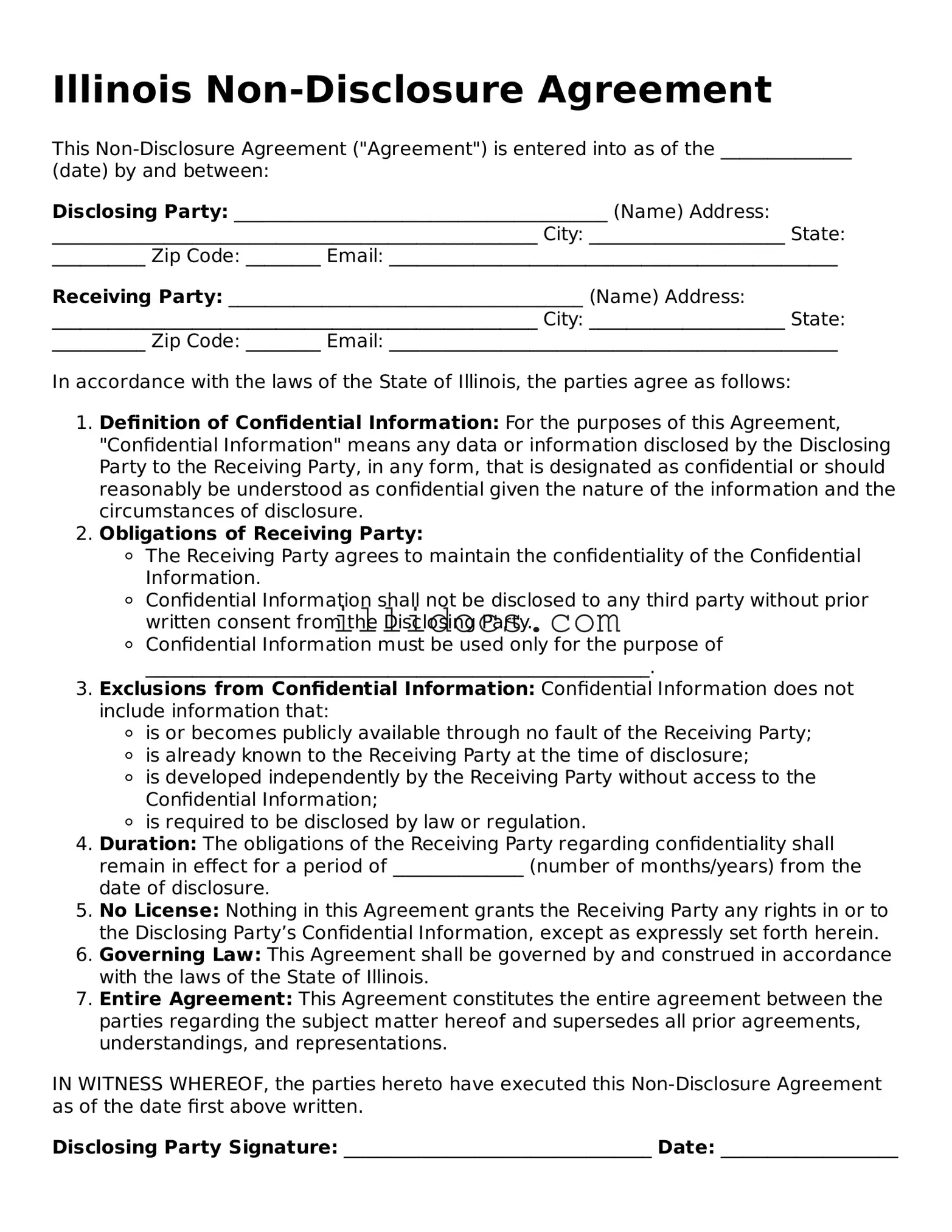What is an Illinois Non-disclosure Agreement (NDA)?
An Illinois Non-disclosure Agreement is a legal contract that establishes a confidential relationship between parties. It is designed to protect sensitive information from being disclosed to unauthorized individuals or entities. This agreement is commonly used in business settings to safeguard trade secrets, proprietary information, and other confidential data.
Who should use an Illinois NDA?
Any individual or organization that intends to share confidential information with another party may benefit from using an Illinois NDA. This includes businesses sharing trade secrets with employees, companies collaborating on projects, or any situation where sensitive information needs protection.
What types of information are typically protected by an NDA?
NDAs generally protect a wide range of information, including business plans, financial data, customer lists, marketing strategies, and proprietary technologies. Essentially, any information that is not publicly available and provides a competitive advantage can be covered under an NDA.
How long does the confidentiality obligation last?
The duration of the confidentiality obligation can vary based on the terms outlined in the NDA. Some agreements specify a fixed term, while others may require confidentiality to be maintained indefinitely, particularly for trade secrets. It is essential to clearly define the duration in the agreement.
What happens if someone breaches the NDA?
If a party breaches the NDA, the non-breaching party may seek legal remedies. This can include monetary damages, injunctive relief to prevent further disclosure, or other appropriate actions as specified in the agreement. The consequences of a breach should be clearly outlined in the NDA.
Can an NDA be modified after it has been signed?
Yes, an NDA can be modified after it has been signed, but both parties must agree to the changes. It is advisable to document any modifications in writing to ensure clarity and enforceability. Verbal agreements may not hold up in court.
Is an NDA enforceable in Illinois?
Yes, NDAs are generally enforceable in Illinois as long as they meet certain legal requirements. These include having a clear purpose, reasonable scope, and not being overly broad. Courts will evaluate the terms to ensure they are fair and protect legitimate business interests.
Do I need a lawyer to draft an NDA?
While it is not legally required to have a lawyer draft an NDA, it is highly recommended. A legal professional can ensure that the agreement is comprehensive, complies with Illinois law, and adequately protects the interests of the parties involved.
Where can I find a template for an Illinois NDA?
Templates for Illinois NDAs can be found online through various legal websites, business resources, and legal document services. However, it is advisable to customize any template to fit specific needs and circumstances. Consulting a legal professional can also ensure the document is tailored appropriately.
